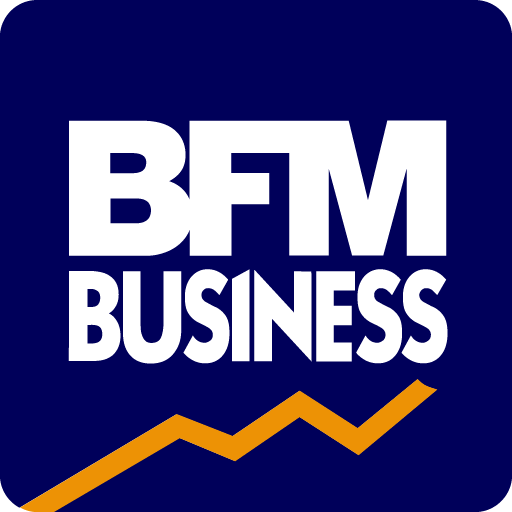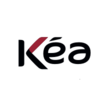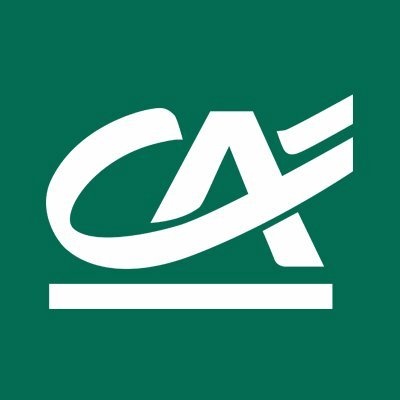Detailed content of our market study
 Inforamtion
Inforamtion
- Number of pages : 35 pages
- Format : Digital and PDF versions
- Last update :
 Summary and extracts
Summary and extracts
1 Market Overview
1.1 Definition and scope of the study
Call centers are defined as all those organizations that provide specialized communication services within a company or independently, through the use of channels such as telephone, fax, e-mail and the Internet. Two categories of call centers are distinguished:
- In-house: when it is a service carried out by a department of the company;
- Outsourced or external: when the support work is done externally.
The services provide distinct call flows:
- Inbound: provided when the call is received, as in after-sales service;
- Outbound: provided when the call center makes outbound calls, such as telemarketing or prospecting services.
In2022the global call center market was estimated at$314.5 billionand is expected to reach a size of about494 billion dollars by 2031, with an average annual growth rate (CAGR) of5,8%.
If in2022the market closed with a ftotal turnoverof about2,8billion, and it is estimated that in2027turnover could approach a record high of3 billionin the Italian market alone.
There are several trends leading this market in the future; first and foremost, one can think of automation and the use of different management systems that are increasingly similar to the concept of smartworking and the cloud. Digital transformation strengthens communication channels, making them available anywhere, anytime, and seamlessly. In addition, more and more call centers are no longer focusing on a low-cost service, but on a strongly customer-oriented service, making it increasingly specific and specialized according to the consumer. The trend is toward closer integration between humans and artificial intelligence, as seen with dialog boxes and intelligent applications.
1.2 The global market
In **** , the global call center market was estimated at $***.* billion and is expected to reach a size of about $*** billion by ****, with an average annual growth rate(***) of *.* percent.
Global call center market World, ****-****, US$ billion Research and Markets
Regional Analysis
The U.S. call center market is estimated at US$***.* billion in ****; China, the world's second largest economy, will reach a market size of US$** .* billion by ****, with a CAGR of *.* percent over the previous period. Other noteworthy regions include Japan and Canada, each projecting growth of *.* percent and *.* percent from **** to ****, respectively. In Europe, the leading state is Germany, which will have a CAGR of about * percent.
1.3 The domestic market
In Italy, industry data describe this market as vibrant and promising, even with a view to growth in the short, medium and long term. In fact, the sector seems to enjoy excellent health, which is why revenues are expected to continue growing at a steady pace until ****. If in **** the market ended withtotal revenues of about $*.* billion, and it is estimated that in **** turnover could reach close to a record $* billion in the Italian market alone.
Thanks to a survey conducted in ****, there are an estimated *,*** companies active in the industry; call centers are divided into:
Inboundcall centers (***), which answer users' calls through operators, through automatic call distribution, through computer-phone integration, interactive voice response systems or similar systems capable of receiving orders, providing product information, dealing with customers for assistance or complaints Outbound(***) call centers, which use similar methods to sell or market goods or services to potential customers, to undertake market research or opinion surveys and similar activities Telecare services without direct medical advice Telephone services of a recreational or informational nature
The approach of employees at an outbound call center tends to be different: it is, in fact, the operators themselves who contact customers (***) to offer promotions, to gather ...
1.4 The impact of the Covid pandemic 19
Before the health crisis, call centers had predictive capacity because of a seasonality effect. Also, before the health crisis, households accepted the waiting time because it was possible to call back later, or they chose to wait a few minutes to get an answer.
However, the health crisis accentuated the weaknesses of call centers: while the need for information during the crisis was higher than usual, the various lines were unable to respond to the mass of calls due to an insufficient number of operators. The reliability of call centers as a link between government, business and the public was widely questioned.
The health crisis then triggered changes in the industry, starting with jobs. As the economic impact of the crisis has affected most sectors, companies will be forced to cut costs as they try to transform into a new type of business, compatible with the post-COVID-** world. Along with an expected drop in consumption, companies will tend to favor new technologies such as Voicebots (***) to deliver an optimal customer experience at a lower cost.
Thus, the crisis has accelerated digitization, and more remote access services will be needed to handle a variety of services such as opening a bank account, ...
2 Demand analysis
2.1 Demand characteristics
Call centers, or contact centers, are a relationship marketing tool, bringing together all actions to enrich the customer relationship. The goal is to build customer loyalty , which reduces the cost of acquiring new customers and encourages them to continue buying products or services. Thus, using a contact center can manage different stages of the customer relationship and strengthen the bond between a company and its customer base.
Call centers can use both inbound and outbound telemarketing techniques.The inbound call centers are call centers that handle inbound calls from users and then present themselves more as a customer service department that can answer customers' questions, solve problems, or help them with special procedures. Customers request this type of service when they need help with a particular product or service offered by a company. [***]
Outbound call centers, on the other hand, are call centers that handle outbound calls to a list of contacts. These calls are usually made to communicate with customers, conduct surveys, welcome new customers, ask for feedback after a purchase, and make attractive offers. The main purpose of outbound call centers is to sell a product.
In this first part, we will take a closer look at user needs ...
2.2 Factors influencing demand
Thecustomer service industry is evolving in terms of service activities and infrastructure to reduce rising costs while increasing the level of customer satisfaction. Specifically, consumers reported that they have preferred channels for getting in touch with customer service. In fact, it is found that **.* percent of consumers perfer to get in touch with customer service representatives by phone, a figure followed by **.* percent who use livechat and **.* percent who prefer virtual assistants. A smaller percentage (***) choose email while the remaining **% choose self-service tools.
Preferred channels for getting in touch with customer support Italy, ****, % Call*net
Most Italians find themselves having to contact a company to express a complaint or request after-sales service. For one in three Italians, contacting the company allows them to obtain information before buying a product or directly purchasing the product or service.
Main reasons for contacting a customer service Italy, ****, in % Source: ****
The following graph shows theevolution of customers' perceptions of some factors related to call centers compared to ****. In ****, Italians expected responses to be much more relevant and handled more quickly. Paradoxically, Italians seem to value human contact as they place more importance on the ability to listen, the personalization of exchanges , and the friendliness of ...
2.3 The new trends
The call center market is at a time of continuous evolution in response to the changing dynamics of the global marketplace and rising customer expectations. Emerging trends in **** highlight an industry in adaptation, trying to balance customer needs with newly available technologies. Based on these premises, the following is an overview of the main trends in the Italian call center market.
Multichannel Contact Center
The adoption of a multichannel approach in contact centers is a predominant trend in ****. This trend involves using multiple communication channels, such as phone, email, online chat, and social media, to interact with customers. This approach not only improves the customer experience but also optimizes contact center operations. Although this trend has been outlined globally, it is highly likely to manifest itself in the Italian market as well given increasing digitization and consumer expectations for more accessible and responsive customer service.
Personalized Customer Path
Placing emphasis on improving the customer journey through personalization highlights another significant trend. This is useful to better understand customer needs and personalize the interaction so as to improve customer satisfaction and loyalty. Even in Italy, personalization of customer service could be seen as a means of standing out in a competitive market ...
3 Market structure
3.1 A fragmented and competitive market
Analyzing the evolution of the call center number in the national context, we see a gradual and steady growth from **** to ****, with a growth rate of *.* percent.
Evolution of the number of call centers Italy, ****-****, in units Source: ****
From the perspective of the distribution of the legal form of companies in the sector, it can be seen that Limited Liability Companies play a key role. Specifically, this results in a significant presence of small and medium-sized companies in the sector. The Limited Liability Company (***) is a very common legal form of company for small and medium-sized businesses, as it offers different types of advantages, such as limiting the individual responsibilities of the partners and making structural management easier.
Distribution of call center types by legal form Italy, ****, % Istat
Over the years, the number of Limited Liability Companies has seen a significant increase from just *** units in **** (***) to **** in ****. Specifically, the last three years under analysis record a stable trend in the number of SARLs and call centers with the legal form of sole proprietorship.
Evolution of the legal form of call centers Italy, ****-****, in units Source: ****
3.2 Value Chain
The chart below represents the value chain and the key players in it:
Source: ****
The call center is responsible for establishing a link between the company and its customers, but also between the different structures of the company; call centers can be considered the hub through which all customer information passes.
3.3 Spatial distribution of call centers in Italy
Distribution of call centers, by region
Italy, ****, in number of companies
Southern Italy is the region with the largest number of call centers, followed by the Northwest and the Center. The Northeast and the Islands have almost the same number of call centers. The lower salaries of southern Italian employees may explain the concentration of call centers in the region, as well as the lack of particular qualifications required for the type of work. [***]
Outsourcing
The possibility of using an outsourced call center facility avoids certain problems such as heavy investment and/or other problems typical of running a call center facility at full capacity.
Outsourcing can be segmented into three different categories grouped geographically:
Domestic outsourcing: Italy; Nearshore: in geographic proximity, such as Albania or Romania to Italy; Offshore: other countries further away, such as India.
Albania, Romania and Croatia are the main countries where outsourcing takes place. With the cost of Italian personnel (***) steadily rising, companies are tempted to outsource to reduce their costs. In addition, numerous mergers and acquisitions have taken place in the industry to expand the scope of the major players. [***]
3.4 Main actors
The call center market represents a vital sector for companies seeking to maintain and improve relationships with their customers. Technological evolution, along with changing customer needs, continues to shape the market, making it a dynamic and constantly evolving sector. An analysis of some of the major players in the Italian scenario is offered below, selecting them based on the value of turnover in recent years.
Covisan: a leader in the provision of customer services, Covisan consists of about *,**** professionals and presents the best cutting-edge technologies to accomplish its mission.
Network Contacts: focuses on Business Process Outsourcing and technological innovation. Part of the Activa Group, it is headquartered in Molfetta.
Distribution Group: Distribution Group S.p.A - Youtilitycenter S.r.l. is a leading company capable of providing efficient solutions for Inbound and Outbound service delivery.
In & Out: a world leader in the provision of contact center services, it has been present for over ** years in ** countries around the world.
Unipolassistance: present in the market since ****, consists of operators to assist consumers in every part of the world.
SKY Italia Network Service : headquartered in Milan, SKY Italia Network Service has been engaged in the provision of customer services for many years, ...
3.5 Advantages and disadvantages of call center outsourcing
Advantages and disadvantages of call center outsourcing
Source: ****
However, there are also hybrid forms between in-house and outsourcing, such as when a company sets up a subsidiary to manage the relationship with customers, or when a group invests in a company that manages contact centers for several customers, of which the group in question is a part. This allows a form of pressure and better control of the centers. The hybridization of expertise maximizes the use of internal resources, keeping agents constantly busy.
4 Supply analysis
4.1 Organization of contact centers and types of services offered
Internal workings of a call center:
The guidescomparative offers a set of specifications for setting up and running a contact center.
We can distinguish two different, or complementary, logics in setting up a contact center:
a quantitative logic: improving the productivity of contact processing a qualitative logic: to improve the quality of services rendered to the customer
Among the technical systems installed in contact centers, we distinguish :
Central systems, consisting of :
Telephone systems (***): different depending on incoming or outgoing calls Interactive Voice Servers (***): transmission of voice announcements to manage waiting time and transmit information to the customer Automatic Call Distribution (***) Computer Telephony Integration (***): allows computer applications to be connected to telephone systems. For example, when a call is received, the caller's profile is automatically presented to the agent DIALER: call generators that enable large numbers of prospects to be reached (***)
Contact center management applications:
Resource scheduling: useful for planning staffing levels based on traffic peaks
Applications available for contact center agents:
Contact management: contains an interview guide, sometimes a customer summary sheet, and information capture to maintain a contact history Agent banner: specifies agent availability and provides information on traffic flows Sometimes CRM-type applications, or access to certain databases
In most ...
4.2 Cost structure and price analysis
Prices vary depending on location and the number of consultants and calls handled. Most industry leaders do not show their prices. However, here are some examples of the factors that are factored into the prices of all contact centers, according to Callcenter-guide:
Premises: price varies depending on location, rent, utilities and other fees. Technology: all the equipment needed for contact and different software. Furniture: everything that goes with the workstation. Management: all employees other than consultants (***). Client consultants
The price breakdown for a classic call-center is generally :
**% for the human element (***). **-**% for technology (***) *-**% for premises and furniture
There are many variables in call center pricing, including: skill levels, type of work, location, and call duration. Other factors may include percentage of sales made, goals to be achieved, hourly or daily rates. [***]
The main cost variable of call centers is location. Therefore, choosing a call center located in the United States or Europe versus India or Latin America will have a different impact on call center pricing. Here is a general guideline for call center pricing by geographic location:
U.S./Canada: $**-$**/hr Eastern Europe: $**-$**/hr Western Europe: $**-$**/h South Africa: $**-$**/h Australia: $**-$**/h Africa/Middle ...
4.3 The future of the contact center in the digital age
Phone calls can thus be matched with the potential of new technologies that make an organizational transformation of the industry immediately feasible and could increase the agility of call centers. The diagram below shows a better idea of the impact of new technologies in the call center field.
Source: ****
This diagram represents the typical flow of a customer call. The dark blue arrows therefore qualify as unproductive, since they are fully automatable in a modern call center. More advanced technologies allow the operator to be involved only in the"productive" part (***), that is, the conversation with the customer, and also provide tools to optimize the conversation itself. Savings can therefore be high.
Savings through new technologies can also be achieved in outbound calls.
Source: ****
The cost savings over the provision of traditional telephone services are sufficient to repay the investment required to equip an advanced call center in a very reasonable amount of time.
Call centers can then accommodate a wide range of applications and services in a manner compatible with the scale of technological and human resources. For example, monitoring tools make it possible to use new data to make necessary adjustments to optimize services.
The use of new technologies ...
5 Regulations
5.1 Rules and regulations
Operators working in the call center sector can legally use publicly available telephone numbers only if they are registered in the register of communications operators managed by AGCOM. Registration is done through an online portal accessible through the national service card, which requires the completion of forms regarding the company's structure, directors and authorized telephone numbers(***). [***]
The obligation applies to all those who perform in the actual this activity, either as an individual or as a contractor. Failure to comply with the obligation to register as a communication operator may result in an administrative penalty of €**,***. In addition, where a decision is made to outsource the call center service, the obligation for the operator to register and maintain its registration should be contractually stipulated. If the call center is based outside the European Union, greater obligations will occur, as there is a need for information from the Ministry of Labor, the Ministry of Economic Development and the Personal Data Protection Authority (***). There is an administrative penalty of ***,*** euros for each omitted or late communication.
Before making a call to numbers in the Italian public database, it is always necessary for the operator to indicate the country from which they are calling, ...
6 Positioning of actors
6.1 Segmentation
- Comdata Italia
- AlmavivA Contact
- SKY ITALIA NETWORK SERVICE
- Network contacts
- Covisian
- Contact Centre Sud
All our studies are available online in PDF format
Take a look at an example of our research on another market!
 Choosing this study means :
Choosing this study means :
Access to more than 35 hours of work
Our studies are the result of over 35 hours of research and analysis. Using our studies allows you to devote more time and added value to your projects.
Benefit from 6 years' experience and over 1,500 industry reports already produced
Our expertise enables us to produce comprehensive studies in all sectors, including niche and emerging markets.
Our know-how and methodology enable us to produce reports that offer unique value for money.
Access to several thousand articles and paid-for data
Businesscoot has access to all the paid economic press as well as exclusive databases to carry out its market research (over 30,000 articles and private sources).
To enhance our research, our analysts also use web indicators (semrush, trends, etc.) to identify market trends and company strategies. (Consult our paying sources)
Guaranteed support after your purchase
A team dedicated to after-sales service, to guarantee you a high level of satisfaction. +44 238 097 0676
A digital format designed for our users
Not only do you have access to a PDF, but also to a digital version designed for our customers. This version gives you access to sources, data in Excel format and graphics. The content of the study can therefore be easily retrieved and adapted for your specific needs.
 Our offers :
Our offers :
the call centre market | Italy
- What are the figures on the size and growth of the market?
- What is driving the growth of the market and its evolution?
- What is the positioning of companies in the value chain?
- Data from several dozen databases
5 reports pack (-15%) IT Italy
- 5 reports at €75.6 excluding VAT per study to choose from our Italian catalogue for 12 months
- Save 15% on additional studies purchased
- Choose to be refunded any unused credit at the end of the 12-month period (duration of the pack)
See the terms and conditions of the pack and the refund of unused credit.















